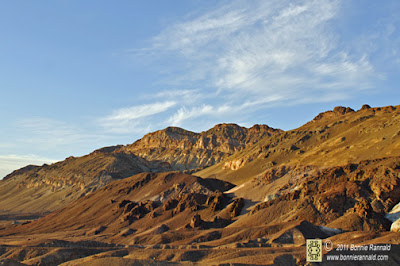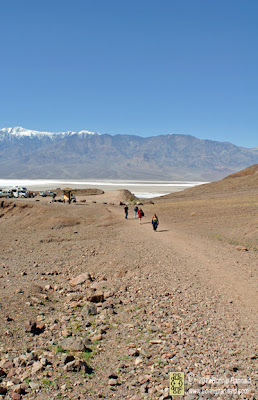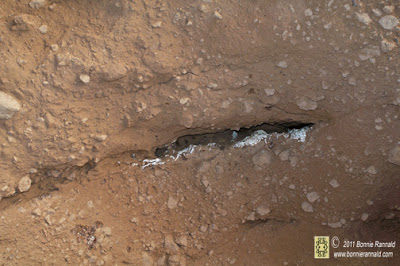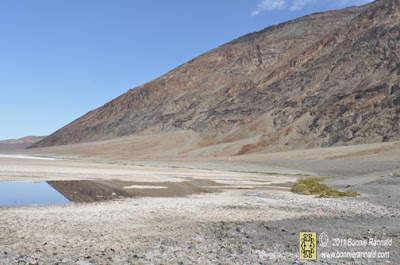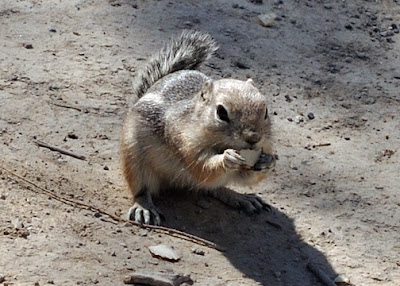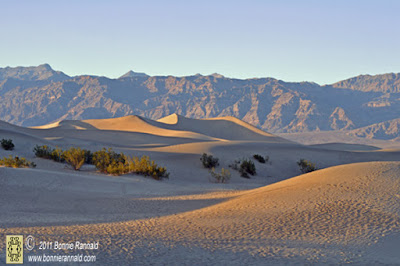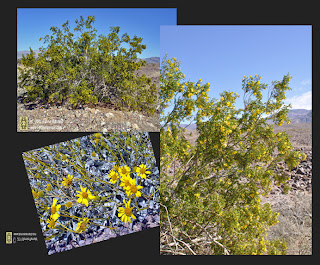Zabriskie Point and the Artist's Pallet
There is so much to explore in Death Valley and one of the most beautiful areas is the Artist's Drive. The nine mile, 14.484096 km, one way scenic loop lies at the foot of the Black Mountains between Furnace Creek and Badwater.
As the narrow paved road curves and bends over hills and across steep gullies, we were taken on a voyage back in time through Death Valley's violent past while it was being created by volcanic activity.
The Artist's Palette, vivid hues of orange, mustard and yellow accent the clay which was composed from cemented gravel and volcanic debris.
The Black Mountains are a result of the uplifting caused from faulting. The broken layers of multi-colored rocks were created over the vastness of time from the oxidation of metals: red, pink and yellow from iron salts; green from decomposing mica; and purple from manganese.
The Desert Holly blends in so well with the harsh desert surroundings,
it often goes unnoticed.
Zabriskie Point and the Artist's Pallet stand as a testament to nature's artistry and the violent eruptions, ancient lava flows and million of years of erosion involved in the creation of Death Valley.
Photography like nature is forever changing and no one moment remains the same. What I found most rewarding with our group in the Death Valley Photography Experience was that we were able to stay on track with our plans for each photography session and were also able to make a mutual change of direction to go to a different scene, whenever it presented itself.
For additional information on Death Valley, please visit the following link:
http://en.wikipedia.org/wiki/Death_Valley_National_Park
What
an exciting and interesting photo-adventure this day has been. I love
it when I am drawn to an area and not knowing what to expect I get
treated to new experiences.
Sign up and follow my blog to see where my next photo-adventure will be!
Photography places me in the moment where I can share that moment in time. It becomes a life story as represented by my interaction with the scene. The happiness and beauty or the sorrow and strife; how I focus leaves a lasting impression that might touch the viewer on a spiritual level.
"Reflecting Nature's Artistry"
No images on this blog are within Public Domain or are available for free download.
All rights reserved, world-wide and images protected by Digital
Millennium Copyright Act (DMCA). All photography, graphics, text,
design, and content is copyrighted by Bonnie Rannald and should not be
copied, down-loaded, transferred and re-created in any way without the
express consent, in writing to Bonnie Rannald.
For information on Bonnie Rannald licensed, right-managed images, please
submit a written request.



